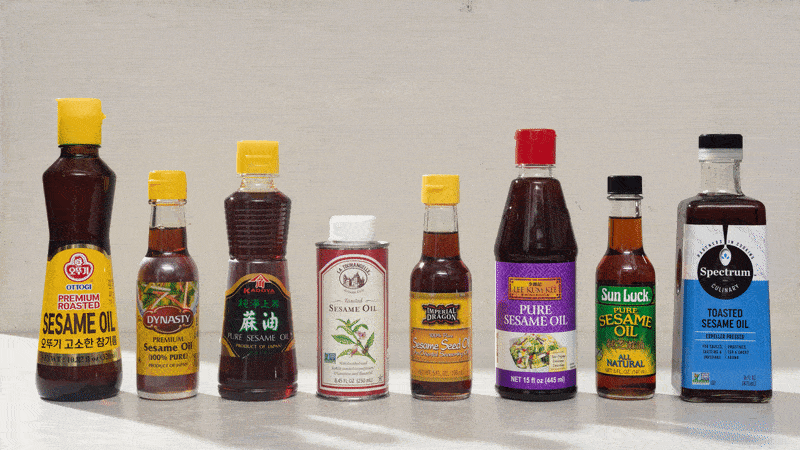The Best Woks
Equipment Review
Nutty and fragrant, a good-quality toasted sesame oil can enhance all kinds of dishes, but bad ones just taste oily or burnt. How do you guarantee great flavor?
Published Apr. 13, 2020. Appears in America's Test Kitchen TV Season 22: Bulgogi and Bokkeumbap

We love toasted sesame oil in the test kitchen. Just a teaspoon or two adds a burst of distinctive toasty, nutty, roasted flavor to any number of recipes, from meats to vegetables to salads and stir-fries. Sesame seeds contain more than 50 percent oil, and sesame oil is one of the oldest foods made by humans; archaeologists have found evidence of its production going back thousands of years. Today, it’s widely used throughout Asia, and the United States is one of its biggest importers.
There are two types of sesame oil, and they can’t be used interchangeably. Plain sesame oil, which is pressed from raw sesame seeds, has almost no color, flavor, or scent. It also has a high smoke point, which makes it a good cooking oil. By contrast, toasted sesame oil is deep amber to brown in color, with an intensely toasty, nutty aroma and flavor and a much lower smoke point. We generally don’t cook with it but use it as a finishing oil, adding a teaspoon or two at the end of cooking or incorporating it into a dressing or sauce.
Because it’s such an important element in so many of our recipes, we chose to focus on toasted sesame oils, and bought eight top-selling products, priced from about $0.40 to about $1.60 per ounce, to discover which tasted best. Twenty-one staffers at America’s Test Kitchen sampled them in two blind tastings, first plain and then in Rice Salad with Peas and Mushrooms.
We were surprised by how much the oils differed in taste. Tasters described flavors that ranged from “nutty, toasty, tasty,” and “a touch smoky,” with an “almost oaky or bourbon quality,” to “a bit too delicate” or, worse, “fishy” and “too intense.” To understand these flavor variances, it helps to know how toasted sesame oil is made. Before milling or pressing whole sesame seeds to extract oil, manufacturers roast them. The roasting step is key: Just as when nuts or coffee beans are roasted or bread is toasted, the application of heat kicks off the Maillard reaction, which creates new flavor compounds and turns the seeds deep golden brown. After the seeds cool, they’re pressed, and the new amber-colored oil is filtered to remove seed particles before being bottled for sale. No other treatment, additives, or enhancements are needed.
According to experts, including a 2016 article published in the International Journal of Food Properties, the biggest factors causing the different sensory qualities of toasted sesame oils are the seeds’ roasting times and the temperature at which they’re roasted. Just like when you toast a slice of white bread, depending on the heat setting and the length o...
The mission of America’s Test Kitchen Reviews is to find the best equipment and ingredients for the home cook through rigorous, hands-on testing.

Lisa is an executive editor for ATK Reviews, cohost of Gear Heads on YouTube, and gadget expert on TV's America's Test Kitchen.

This is a members' feature.